












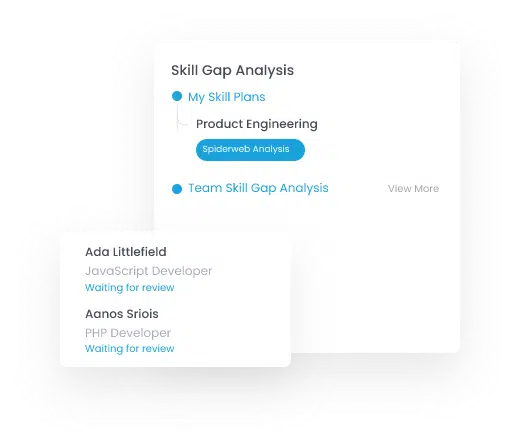
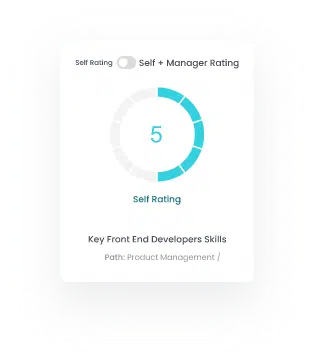
In this step, employees rate themselves based on their analysis and understanding of the skills they require for their specific job roles. Rating is done on a scale of 0-10 to decide how efficient he is, as per his interpretation of his roles.
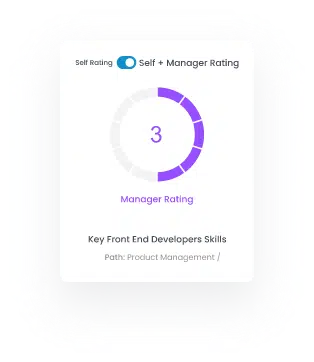
Simultaneously, how the manager analyses and provides feedback about the employees can differ from the employee’s self-rating. Having a manager rating provides two viewpoints to be highly confident of the gap analysis of subordinate employees.
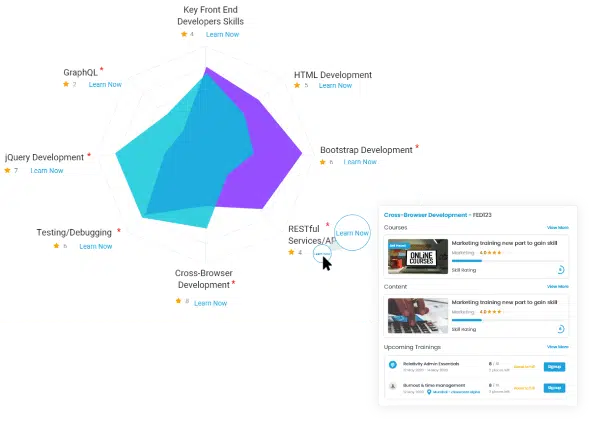
The ratings are represented on a spider-web diagram to understand the mergers and gaps between ratings and eventually decide the courses required for upskilling the workforce. In addition, the diagram covers self and senior perspectives about employees’ skill gaps in a diagrammatic representation.
The above diagram is for reference, and the dimensions change as per an individual’s skills. The different colors represent self and manager rating on the scale. Overall, it helps to distinctly conclude the more vital skills and skills that an employee lacks when in a specific job role.
Course recommendation is a crucial component in learning and development. Analyzing and studying the skill gap analysis becomes successful only when the employee gets trained and gains the required knowledge to upskill or reskill themselves.
Get the skill development Learning Management System that analyzes and recommends system-generated courses that employees can take up to build their skill set at their own pace. The platform makes it possible to have the skill-building courses at their fingertips instead of waiting for in-person training programs to happen in the future.
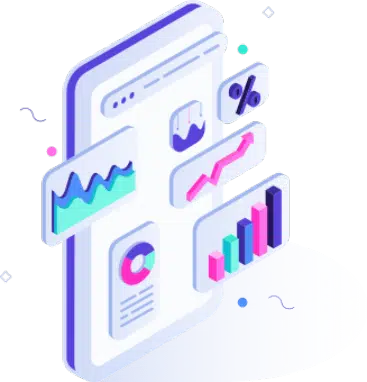
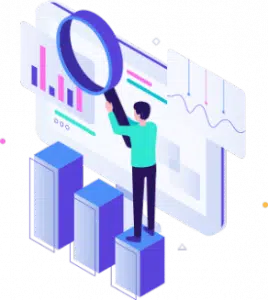
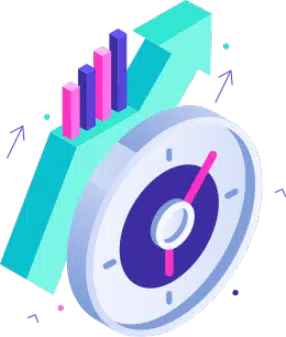
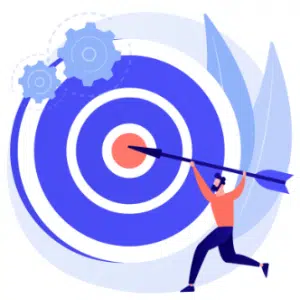
Once you identify what to train and how to train, you can achieve significant levels of training effectiveness. When training is effective, the employees develop the appropriate knowledge base to outperform in their job roles and achieve goals aligned with organizational goals. Each organization has different requirements and skilling people as required becomes easy with skill development software.
Get the Skill development platform and plan to achieve your organizational goals today!

It involves changing people to improve performance, which in turn changes organizations to improve success

We always deliver more than expected for business both large and small

Check out our advice on selection of the ideal LMS for your training company so that your clients have the finest learning experience possible
Paradiso LMS and AI-powered learning tools offer a complete, smart learning platform that boosts productivity and streamlines operations. Empower your team with scalable, AI-driven solutions to stay ahead in today’s fast-paced business world.
Take our quick quiz to find the best LMS for your business in just 30 seconds! Answer a few simple questions, and we’ll match you with the perfect solution tailored to your needs and budget. Start now and make the right choice for your team!
Get an accurate LMS cost estimate in seconds! Just select your users, and we'll calculate the best pricing for your needs. It's quick, easy, and tailored to help you find the perfect solution within your budget!
Other Links
Company
Paradiso™ Solutions.
Our website uses small pieces of data (known as cookies) to make the website function, remember who you are, personalize content, and provide a safer experience on our site. Some of these cookies are necessary for the website to operate properly. By clicking 'Accept,' you agree to the uses outlined in our Cookies Notice. If you click 'Decline,' we will block all non-essential cookies, but those crucial for the website's operation will still be used.